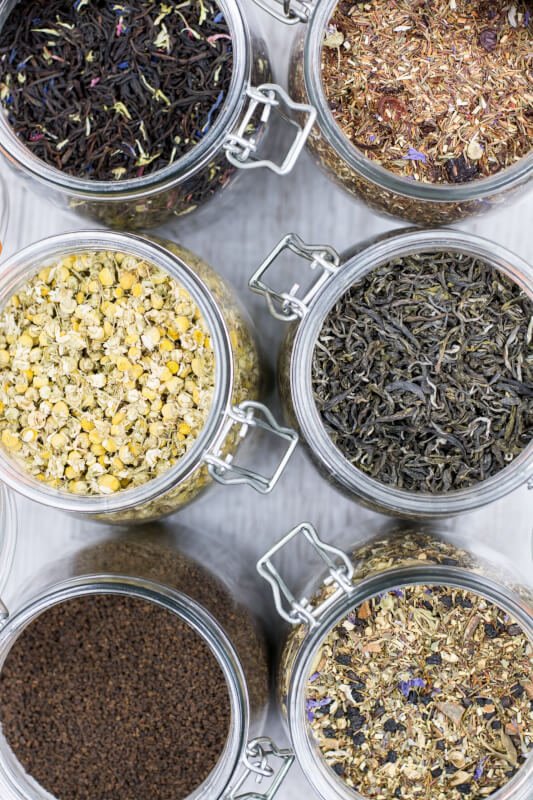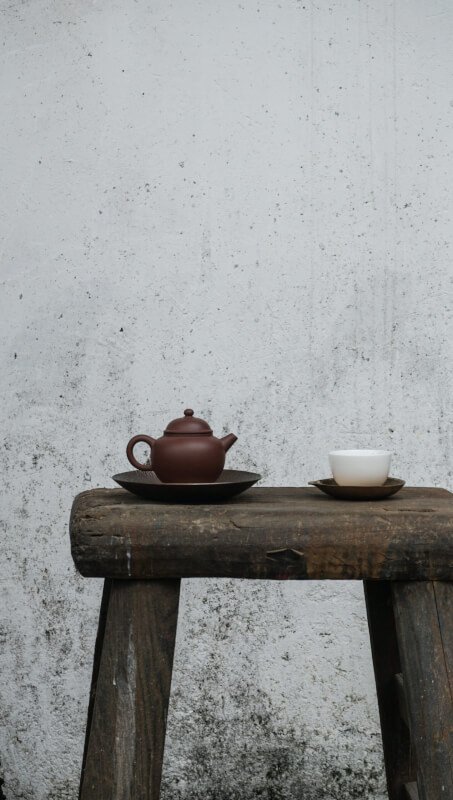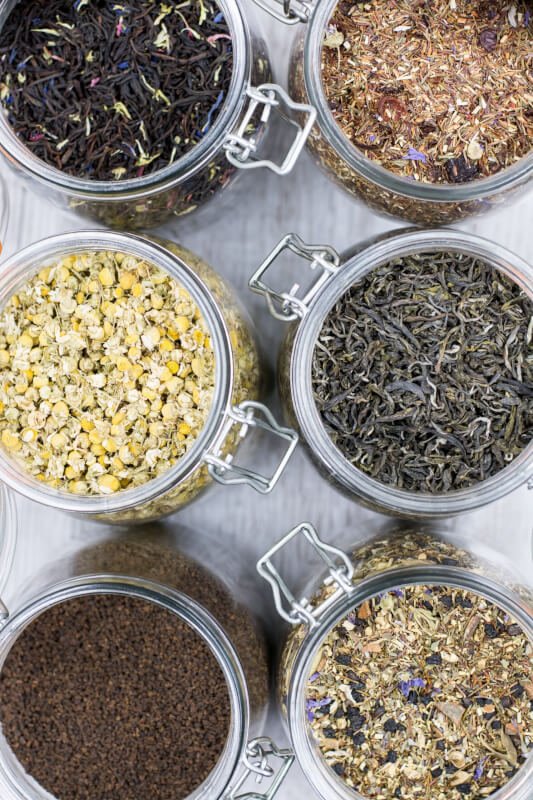If you’re a tea lover looking to enhance your tea-drinking journey, creating a tea-tasting journal is the perfect way to document and cherish your specialty tea experiences. With its pages dedicated to capturing the nuances, flavors, and aromas of each cup, a tea-tasting journal becomes an invaluable companion. By recording your thoughts, observations, and personal ratings, you can not only track your preferences but also uncover new tea discoveries along the way. So, grab a pen, a fresh cup of tea, and let’s explore the art of creating a tea-tasting journal together.

Choosing a Tea-tasting Journal
Choosing a tea-tasting journal is an exciting first step towards documenting your specialty tea experiences. As you embark on this journey, it’s important to consider your preferences. Do you prefer a traditional or modern style journal? Would you like a compact or larger journal? Think about these preferences as they will enhance your overall tea-tasting experience.
Once you’ve identified your preferences, it’s essential to check for some key features in a tea-tasting journal. Look for a journal that has sections or pages specifically designed for recording tea details, aroma, appearance, taste, and mouthfeel. This will help you to easily organize and reference your notes. Additionally, consider if you want a journal that includes educational information about tea terminology and brewing instructions. These features can elevate your tea-tasting experience and further your knowledge.
When selecting a tea-tasting journal, quality materials are also worth considering. Look for a journal with durable pages that can withstand frequent use and jotting down your thoughts. Sturdy bindings and covers will ensure that your journal lasts for years to come. The tactile experience of using a journal made from high-quality materials can further enhance your tea-tasting journey.
Gathering Tea-tasting Supplies
To begin your tea-tasting adventure, gather the necessary supplies that will accompany your new journal. Tea samples are at the heart of your tea-tasting experience, so make sure to have a variety of teas on hand. Choose a selection of different types, such as green, black, oolong, and herbal teas, to explore a wide range of flavors and aromas.
In addition to tea samples, you’ll need water and teaware. Using filtered water will ensure that the flavors of the tea are not influenced by any impurities. As for teaware, invest in a good teapot or a tea infuser, depending on your preference. Having a dedicated set of teaware for your tea tastings will enhance the ritualistic aspect of enjoying tea.
Completing your tea-tasting setup requires stationery and writing tools. Choose pens or pencils that you enjoy writing with and select a notebook or loose-leaf paper for taking notes. Consider using a pen with a fine tip for more precise writing. Having these supplies ready will allow you to capture your thoughts and impressions as soon as you begin your tea-tasting session.

Setting Up Your Tea-tasting Journal
Once you have your tea-tasting journal and supplies, it’s time to set it up for your tea-tasting sessions. Start by deciding on the format that works best for you. Some may prefer a chronological format, while others may prefer organizing their journal by tea type or region. Choose a format that is intuitive and easy for you to navigate.
Designing the cover and title page of your tea-tasting journal adds a personal touch to your documenting experience. Consider using tea-themed artwork, a photo of your favorite tea, or a quote about tea to decorate the cover. The title page can include your name, the purpose of the journal, and any other information that feels meaningful to you.
Creating an index or table of contents will keep your tea-tasting journal organized. This allows you to quickly locate specific teas and notes. Number the pages of your journal and create a clear hierarchy of headings to make referencing your entries a breeze. The index or table of contents should serve as a roadmap to your tea-tasting journey.
Organizing Tea-tasting Entries
Organizing your entries is crucial for easy reference and a cohesive tea-tasting journal. Each tea-tasting entry should begin with recording the tea details. Note the name of the tea, the type, and any other relevant information such as the region or cultivar. This will help you differentiate between teas and recall their unique characteristics in the future.
After noting the tea details, evaluate the aroma and appearance of the tea. Take a moment to inhale deeply and describe the fragrance. Is it fruity, floral, or earthy? Then, observe the tea’s appearance, looking for the color, clarity, and any unique characteristics.
Next, focus on the taste and mouthfeel. Take small sips and let the flavors develop on your palate. Pay attention to the various flavor notes, such as sweetness, bitterness, or hints of specific fruits or spices. Consider the texture of the tea as well, noticing if it’s light, smooth, or astringent. Note these observations in your journal to capture the full tea-tasting experience.

Developing a Tea-tasting Vocabulary
Enhancing your tea-tasting journey involves developing a tea-tasting vocabulary. Educate yourself about tea terminology to better describe the characteristics and nuances of each tea. Learn about the different types of teas, such as the variations within green, black, oolong, and herbal teas. Understanding the language used by tea professionals will expand your knowledge and enable you to express your thoughts more precisely.
Practice descriptive language to articulate your sensory experiences. Experiment with adjectives that convey aroma, taste, and mouthfeel. For example, use words like “buttery,” “floral,” or “brisk” to describe the characteristics of each tea. The more you practice and explore different teas, the more your vocabulary will grow.
While learning about tea terminology is essential, don’t forget to include your personal associations in your tea-tasting journal. Feel free to draw connections between certain teas and memories, emotions, or even specific moments in your life. Including personal associations will create a more holistic and meaningful record of your tea experiences.
Adding Additional Information
In addition to the sensory aspects of tea-tasting, consider including additional information about the tea itself. Research and document the tea’s origin and processing methods. Knowing the tea’s origin can provide insight into its unique flavor profile and cultural significance. Understanding the processing methods can also help you appreciate the craftsmanship behind each cup of tea.
Brewing instructions are another valuable addition to your tea-tasting journal. Experiment with different steeping times, water temperatures, and tea-to-water ratios. Documenting your brewing instructions will allow you to recreate your favorite cups of tea and refine your brewing techniques.
Don’t forget to include details about the purchase and storage of your teas. Note where you acquired each tea, such as a specific tea shop or online retailer. Additionally, record details about how you store your teas, including the type of container or packaging used. These details will help you keep track of where to repurchase your favorite teas and ensure proper storage practices.
Experimenting with Tea Tasting
As you delve deeper into tea tasting, don’t be afraid to experiment and try new approaches. Explore different brewing methods to uncover unique flavors and characteristics. Experiment with gongfu brewing, a traditional Chinese method that involves multiple infusions using smaller amounts of water. Alternatively, try grandpa-style brewing, where tea leaves are simply placed in a cup and continuously topped up with hot water. Each brewing method offers a distinct tea-tasting experience worth exploring.
Comparing teas from different regions is another exciting way to expand your tea-tasting horizons. Taste teas from various countries, such as China, Japan, India, or Sri Lanka, to discover the distinctive qualities and flavor profiles each region has to offer. Not only will this broaden your tea knowledge, but it will also deepen your appreciation for the cultural and geographical factors that contribute to each tea’s unique characteristics.
Exploring pairing tea with food is a delightful way to elevate both your tea and culinary experiences. Keep notes on the foods you pair with different teas and how the flavors complement, contrast, or enhance each other. The world of tea and food pairing is limitless and can be a fun and creative way to enjoy and understand the versatility of tea.
Sharing and Comparing Notes
Tea tasting is undoubtedly a journey best shared with fellow enthusiasts. Joining a tea-tasting community allows you to connect with like-minded individuals who share your passion for tea. Online platforms, forums, and social media groups provide spaces for sharing notes, asking questions, and learning from others’ experiences. Engaging in conversations with others will expand your knowledge and provide new perspectives on tea.
Attending tea tastings or workshops is another fantastic way to enhance your tea-tasting journey. These events provide opportunities to taste a variety of teas, learn from experts, and gain insights into different tea cultures and traditions. Participating in tastings and workshops will deepen your appreciation for the art of tea and broaden your sensory experiences.
Exchange notes with fellow tea enthusiasts to compare and learn from each other’s experiences. Share your favorite tea discoveries, ask questions, and offer feedback. Not only will this exchange of notes strengthen your bonds with other tea lovers, but it will also expose you to new teas and perspectives you may not have otherwise encountered.
Tracking Your Tea-tasting Journey
Creating a timeline of your tea discoveries can be a helpful way to track your tea-tasting journey. Record the date you tasted each tea, along with any relevant details. This timeline will not only serve as a chronological record of your tea experiences but will also allow you to revisit teas and observe how your tastes evolve over time.
Set goals for exploring new teas and techniques. Challenge yourself to try a tea from a new region or experiment with a unique brewing method once a month. By setting goals, you can keep your tea-tasting journey dynamic and continuously expand your knowledge and palate.
Periodically reflect on your progress and preferences. Take time to review your notes and consider how your tastes and preferences have developed. Reflecting on your journey will deepen your understanding of your personal tea preferences and help you refine your future tasting experiences.
Preserving and Personalizing Your Journal
To ensure your tea-tasting journal lasts for years to come, proper storage is essential. Protect your journal by storing it in a cool and dry place to prevent damage from moisture or excessive heat. Consider using a protective cover or a dedicated storage box to safeguard your journal from wear and tear.
In addition to preserving your journal, personalizing it can make the experience even more special. Add illustrations, sketches, or photographs to capture your tea-tasting environment or specific tea-related moments. These personal touches will bring your journal to life and make it a cherished keepsake of your tea journey.
Consider using a digital journal if that aligns better with your lifestyle and preferences. Digital journals offer the convenience of easy typing, quick edits, and the ability to include multimedia elements. Whether you choose a physical or digital journal, the most important aspect is choosing a format that allows you to enjoy and appreciate your tea-tasting experiences to the fullest.
Creating a tea-tasting journal is a rewarding endeavor that allows you to deepen your knowledge, explore diverse flavors, and reflect on your journey. As you embark on this tea-tasting adventure, let your preferences guide you in choosing the perfect journal, gather the necessary supplies, and set up your journal thoughtfully. Remember to savor every sip, capture your sensory experiences in detail, and embrace the joy of sharing and comparing notes with fellow tea enthusiasts. May your tea-tasting journal become a cherished companion throughout your tea-filled explorations.


